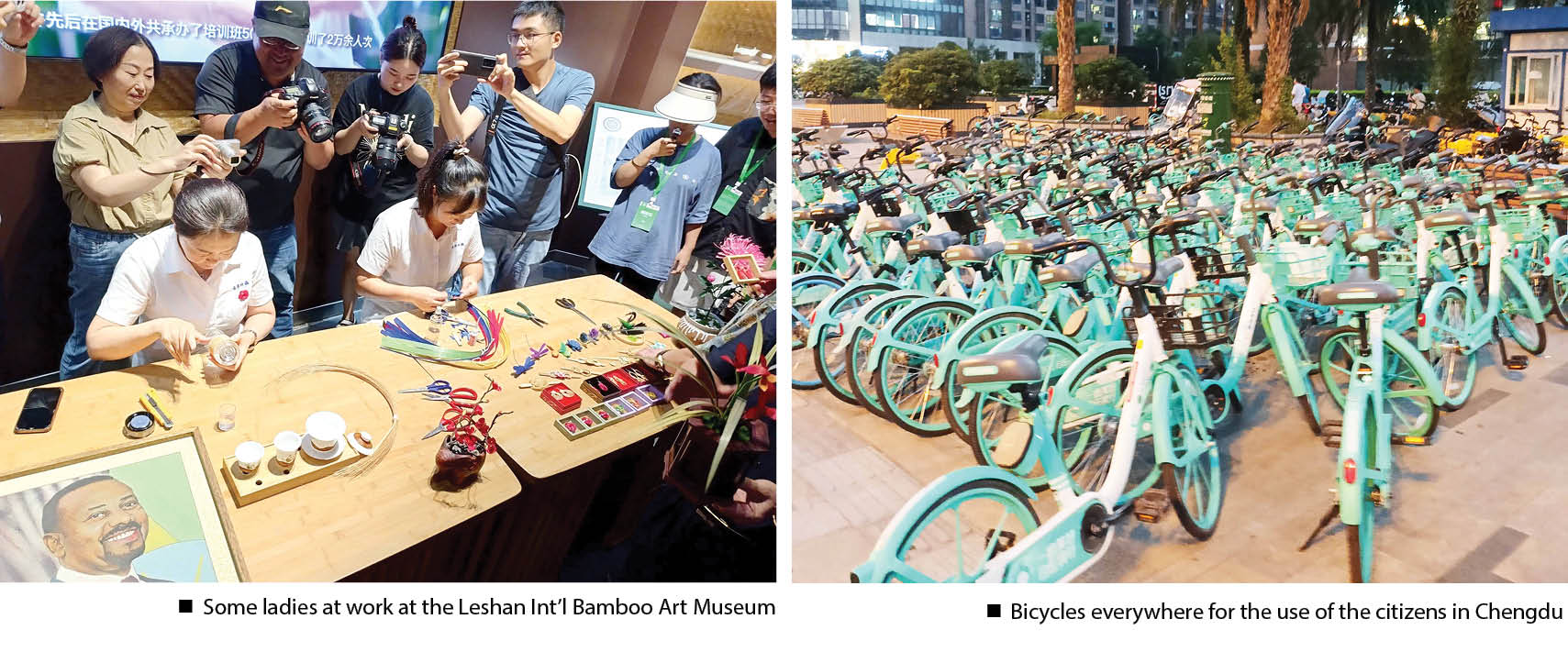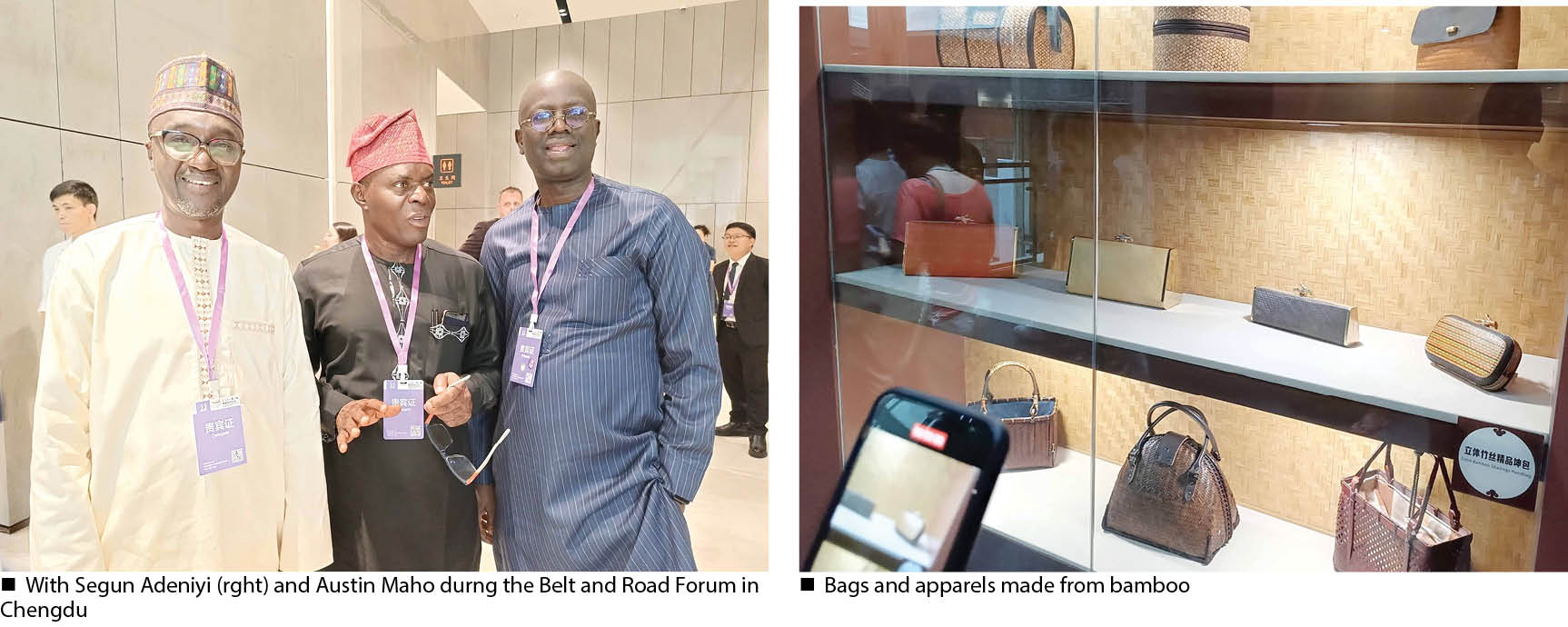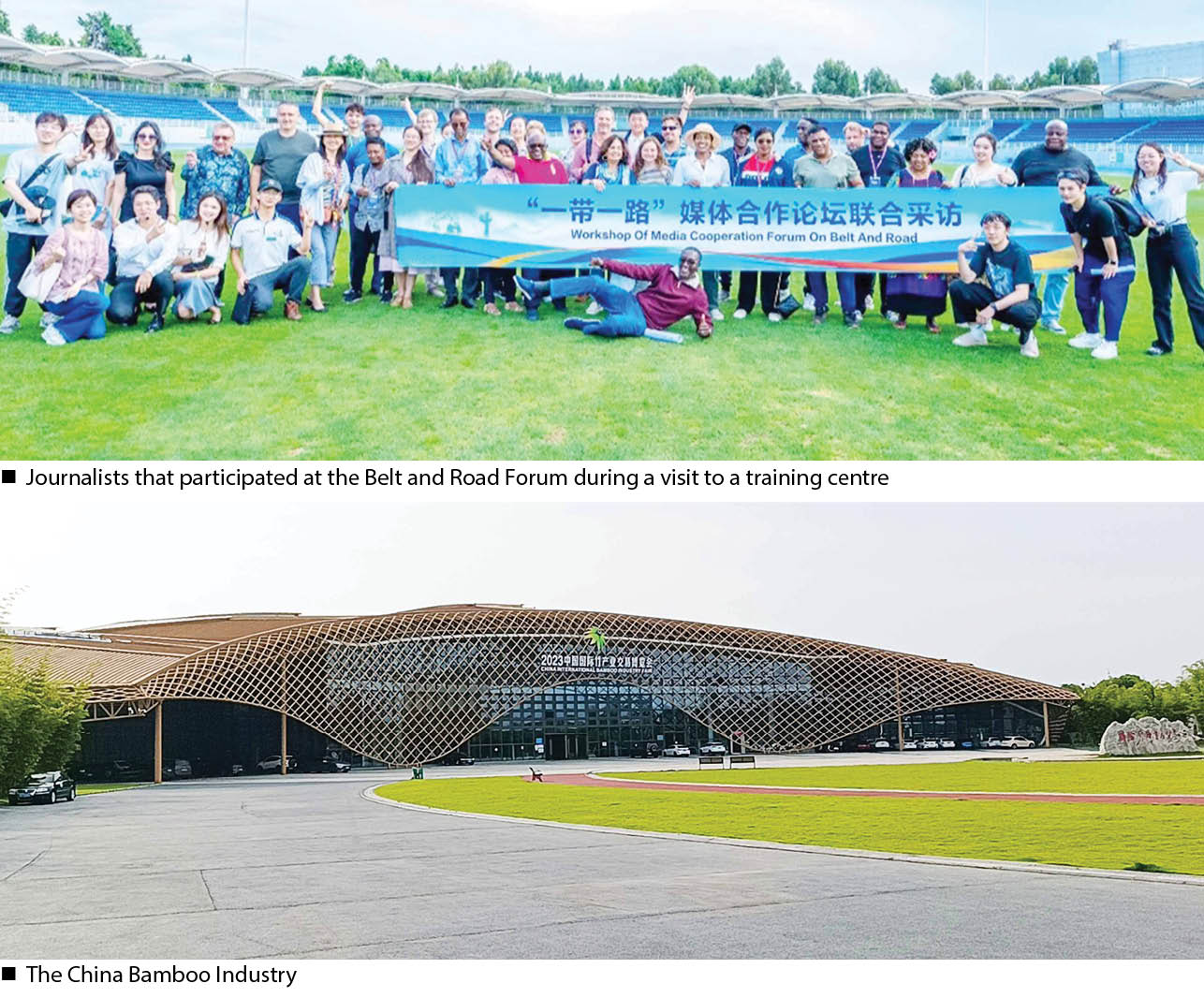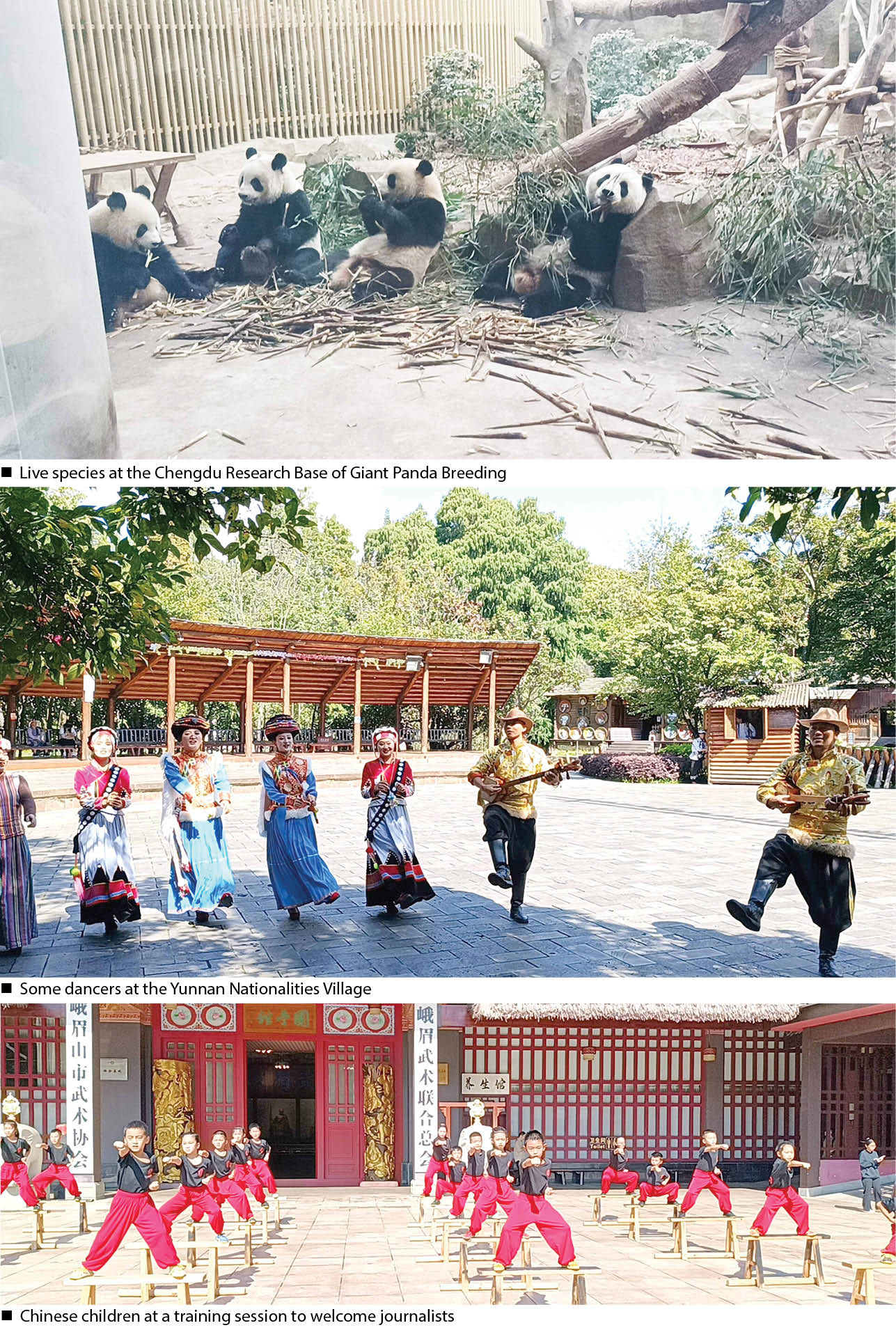10 days in China
I returned from China on Friday, September 6, 2024, after a roughly 10-day stay in that part of the world which while growing up we called in Hausa, Bangon duniya (final bus stop), because of its distance from most parts of the world. My conclusion at the end of the visit was that China did not […]

10 days in china
I returned from China on Friday, September 6, 2024, after a roughly 10-day stay in that part of the world which while growing up we called in Hausa, Bangon duniya (final bus stop), because of its distance from most parts of the world.
My conclusion at the end of the visit was that China did not get to where it is today by accident or by guess work or by impunity; it got there by planning, selflessness and patriotism.
Even though some people will say it is foolhardy to put Nigeria and China on the same scale using the same parameters considering their over 5,000 years’ history, one would be forgiven to make comparison on the trajectory of the development recorded in China from 1949 following the Communist Party’s takeover (exactly 75 years now) and Nigeria’s independence in 1960 (exactly 64 years now).
The difference is just 11 years, but when one considers the gap between the two countries, it is like the distance between the earth and the sky.
The Chinese are proud of their country because they worked hard to have it. Before the development, the people were in sync with their leaders, and together, they agreed to have a country, and they have it.
They are making serious economic and social developments, albeit quietly: no tantrums, no squabbles and no envy. They work together and share the credit.
They have transformed their country into a first world. Their youths are gainfully employed. Their culture and tradition are intact and have blended with modernity. They have built their own paradise.
Indeed, the recent trip was one of my best in recent times. It came while I was enjoying my annual leave. The journey was at the instance of the People’s Daily, the official newspaper of the Central Committee of the Chinese Communist Party (CCP). The newspaper provides information on the policies and viewpoints of the CCP in multiple languages.
The event we attended was the 2024 Media Cooperation on Belt and Road; a strategy initiated by the People’s Republic of China that seeks to connect Asia with Africa and Europe via land and maritime networks with the aim of improving regional integration, increasing trade and stimulating economic growth.
The theme of this year’s event was: “Enhancing Media Cooperation for Common Development”, and it attracted Chinese and foreign guests who exchanged ideas, shared insights and pooled wisdom.
From Nigeria, those who attended the event include the Chairman of the Editorial Board of ThisDay newspapers and former spokesman of late President Umaru Yar’Adua, Olusegun Adeniyi; the founder of Day Break newspaper, Austin Maho; and I.

Adeniyi and Maho had been to China several times, but it was my first; and I marveled at what I saw.
The major event, which was the conference, lasted about 11 hours, during which over 30 resource persons from China, Pakistan, Hungary, Russia, UAE, Nigeria, South Africa, Spain, Brazil, Kyrgyzstan, Thailand, among others, spoke elaborately on the indispensability of cooperation for mutual benefit.
Some of us arrived in Chengdu City, Sichuan Province, on Monday, August 26, rested on Tuesday, and the meeting was held on August 28.
With the exception of a few of the participants such as Adeniyi, who returned to their countries, some of us had the opportunity to remain there for almost 10 days, and every other day was characterised by visitation to factories and tourism attractions in different provinces.
In Chengdu for instance, we visited the Eastern Suburb Memory District, Du Fu Thatched Cottage Museum, Shudao Investment Group Company, the research base for Giant Panda, Ebony Cultural Museum and Suji Ancient Town.
We were also in Kunming City, Yunnan Providence, where we visited the Heigeng Sports Training Base where thousands of athletes from all over the world go for training, and by implication, create jobs and business for the locals.
Food is available in China
There is a notion, especially in this part of the world, that there is hunger everywhere! But many of us contested this notion after our visit to China.
For instance, I refused to sleep during our 148km trip from Chengdu to Leshan. We also drove from Leshan to Meishan City, a distance of over 70km. All the roads are dual carriage, and in some places, there are three or four lanes; all with traffic lights and security cameras, hence a strong deterrence to men of the underworld.
But the icing on the cake was that I saw countless farms, most of them with green houses, with farmers growing both cash and food crops.
Some of the farms grow fruits and vegetables. What more? The farmers mostly live there with their families as they have access to all basic amenities of life like roads, electricity and market. They are not in any way attracted to the cities.
After a check on Google, I discovered that China has made significant efforts to achieve self-sufficiency in feeding its population. Food is seen as national security and both the rich and the middle class have access to it. The World Bank’s calculations suggest China’s rate of extreme poverty has plummeted from one of the highest in the world – 88% – in 1981, to virtually zero today. It was told that over 800 million people have been lifted out of poverty.

Under President Xi Jinping, the Chinese government has channelled substantial resources into strategies for enhancing agricultural productivity, reducing waste and diversifying sources of supply to avoid overreliance on food imports.
There is much for Nigeria to learn in this respect considering that all the farms that have been abandoned due to insecurity along the Abuja-Kaduna-Kano, Katsina-Gusau-Sokoto, Lagos-Ibadan roads and many other locations across the country can be reclaimed and put to use, because they have the potential to feed the country.
Why Zamfara gold should get China’s bamboo treatment
While growing up, bamboo was so common in many parts of Nigeria, but it is now a rare sight. Besides, its most important usage is as scaffold in some construction sites. But in China, it is a multi-billion dollar industry.
When we visited the International Bamboo Art Museum in Leshan, the place was a sight to behold – an intimidating high rise Chinese architecture edifice adorned with carpet grass.
I don’t know which “factory” to compare it with, but then, what came to my mind is the untapped multi-billion dollar Zamfara gold, and indeed all the various precious stones and minerals found in almost all the 36 states of the federation and the FCT, that are now at the mercy of illegal miners and bandits.
In Leshan and many other towns and villages in China, bamboo is gold; a source of employment and wealth. They use it for various purposes like roofing, furniture, flooring, bags, shoes and apparels.
In Nigeria, we also have a lot to gain from bamboo, cashew, moringa, sesame and others which we have in abundance, but unfortunately, we have remained fixated with oil to do the magic for us.
Flower factory akin to Nigerian Exchange (NGX)
We travelled by air to Kunming City in Yunnan Province on Tuesday, September 3, and of all the things we saw, what took away my attention was the International Flora Auction Trading Centre. The only thing they deal in is flowers. Yes, flowers, including chrysanthemum, cally lily, rose flower and sun flower.
On seeing the factory, I put it side by side the Nigerian Exchange Limited (NGX); one of the leading markets in Africa by market capitalisation and turnover.
Of course, the comparison was not in monetary terms, but in terms of activities.
Situated in South West China, hundreds of brokers at the factory decide whether to bid for flowers based on information such as variety or grade. On average, a deal is made every four seconds.
Technologies have been leveraged to solve the challenges in seed breeding and flower cultivation. In one of the bidding halls, we saw at least 300 youths bidding, and in another hall, over 150 youths were at work.
These were besides scores of youths doing the sorting and packaging in different halls while a number of others conveyed the flowers in crates to vehicles for onward delivery to various parts of China by road, train, air and on water. Indeed, the value chain is enormous.
We visited many other small and medium factories, including the railway training school, all of them low-hanging fruits that can change the fortune of a people.

But how did China get to where it is?
Security: No country has zero crime; but someone said safety is “evenly distributed” in China, and that in cities and rural areas, the citizens sleep with both eyes closed.
We were told that even if someone perpetuates an indiscretion, it is very easy to catch him or her. And they would be punished without fear or favour.
Electricity: This has propelled massive industrialisation. Everywhere you go, you see large scale, medium and small scale industries with people gainfully employed.
In 2023, China’s total installed electric generation capacity was 2.92TW, of which 1.26TW was renewable, including 376GW from wind power and 425GW from solar power. As of 2023, the total power generation capacity for renewable energy sources in China was at 53.9 per cent. The rest was mostly coal capacity, with 1040GW in 2019.
In July, 2024, electricity production in China reached 883,110GWh, compared with 768,520GWh in the previous month.
No wonder, we saw countless electric cars, buses and trucks travelling long distances because the infrastructure is there.
They ensured that the horse was ready before they brought out the cart.
Discipline/rule of law: It was in China that I saw roads designed to accommodate both the rich and the poor.
There are lanes marked for trucks, buses, cars, motorcycles/scooters, bicycles and pedestrians. They respect traffic lights. In fact, I did not see a single accident.
Stunned by the sight of thousands of bicycles and scooters parked by the roads, I asked one of our guides why they were not being stolen.
She was shocked and surprised by my “silly question”, but then said, “Some of them belong to individuals or organisations, but many of the bikes are provided by the government to ease transportation, and you need a QR code to operate them for a small fee.”
She added, “After all, why should someone who is gainfully employed or a student who is looking forward to graduation steal them when he knows they are meant to ease transportation?”
I tactically shifted the conversation to other issues.
China is located in Eastern Asia. It occupies nearly 9.6 million square kilometres or nearly one quarter of Asia’s landmass and is as large as Europe.
But curiously, there is nothing like ungovernable space there, as development has reached as many people as possible among its over 1.4 billion population.
The statistics are there, considering that before 1949, China wasn’t anything to reckon with, but its economy magically transformed from one of the poorest to one of the world’s largest.
And based on what I saw, I told myself that if there is the will, nothing is impossible. What is needed is the “we can do it” spirit. And this must start with our leaders.
